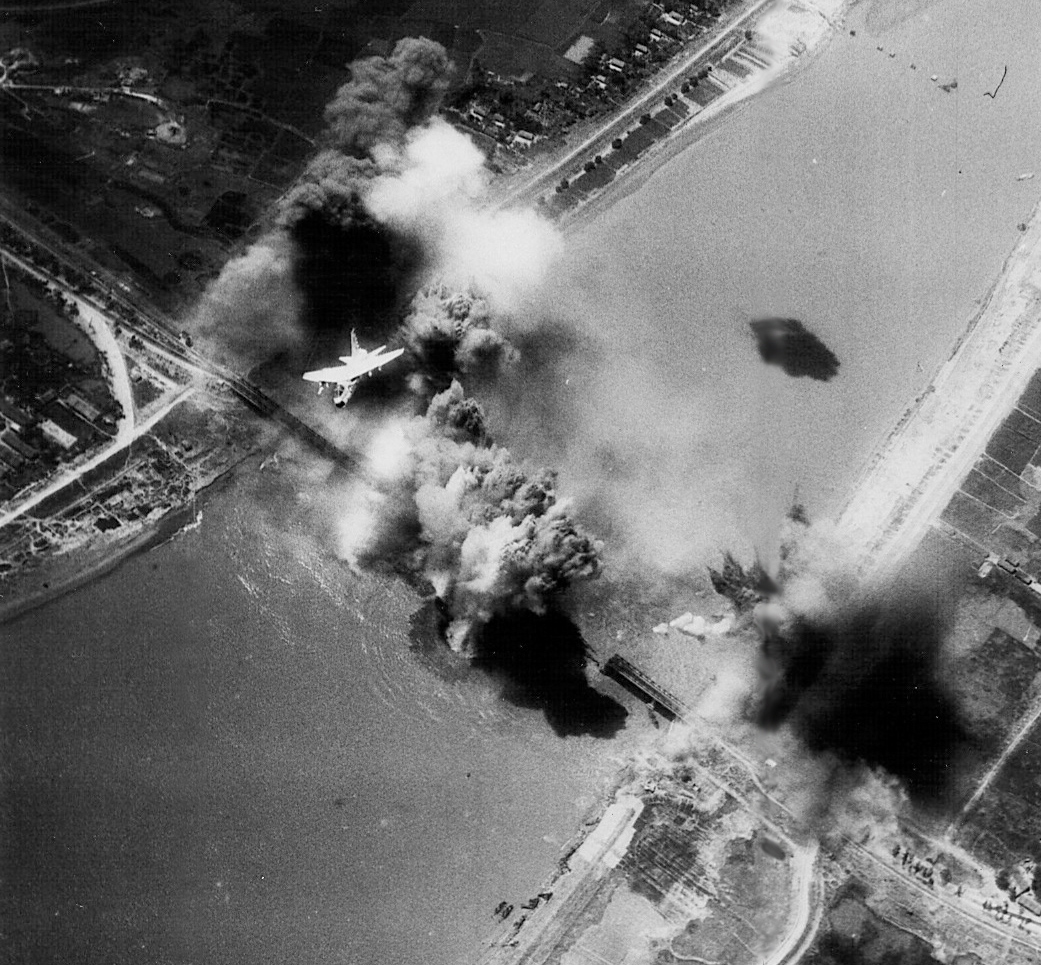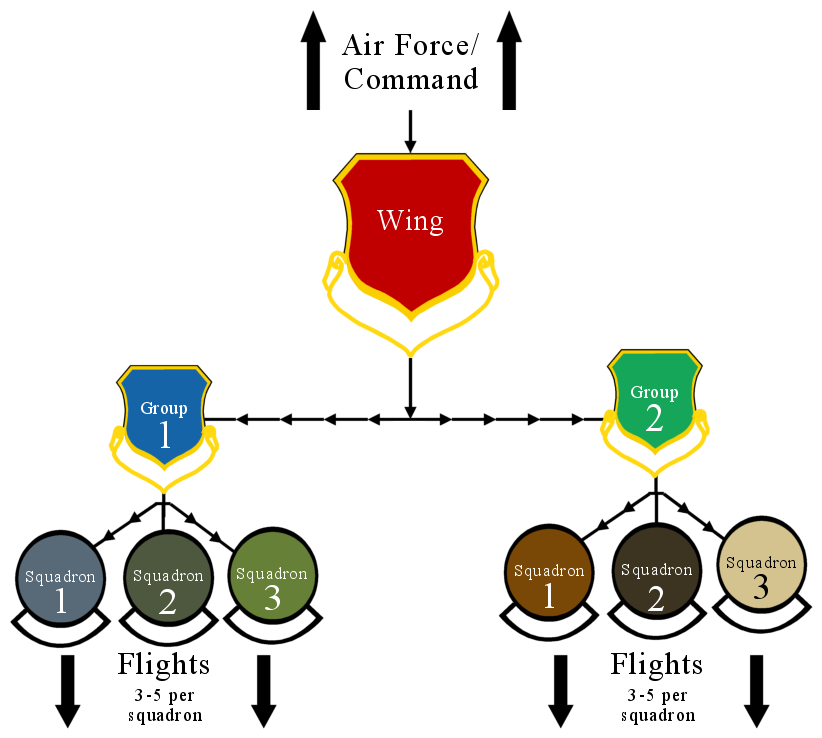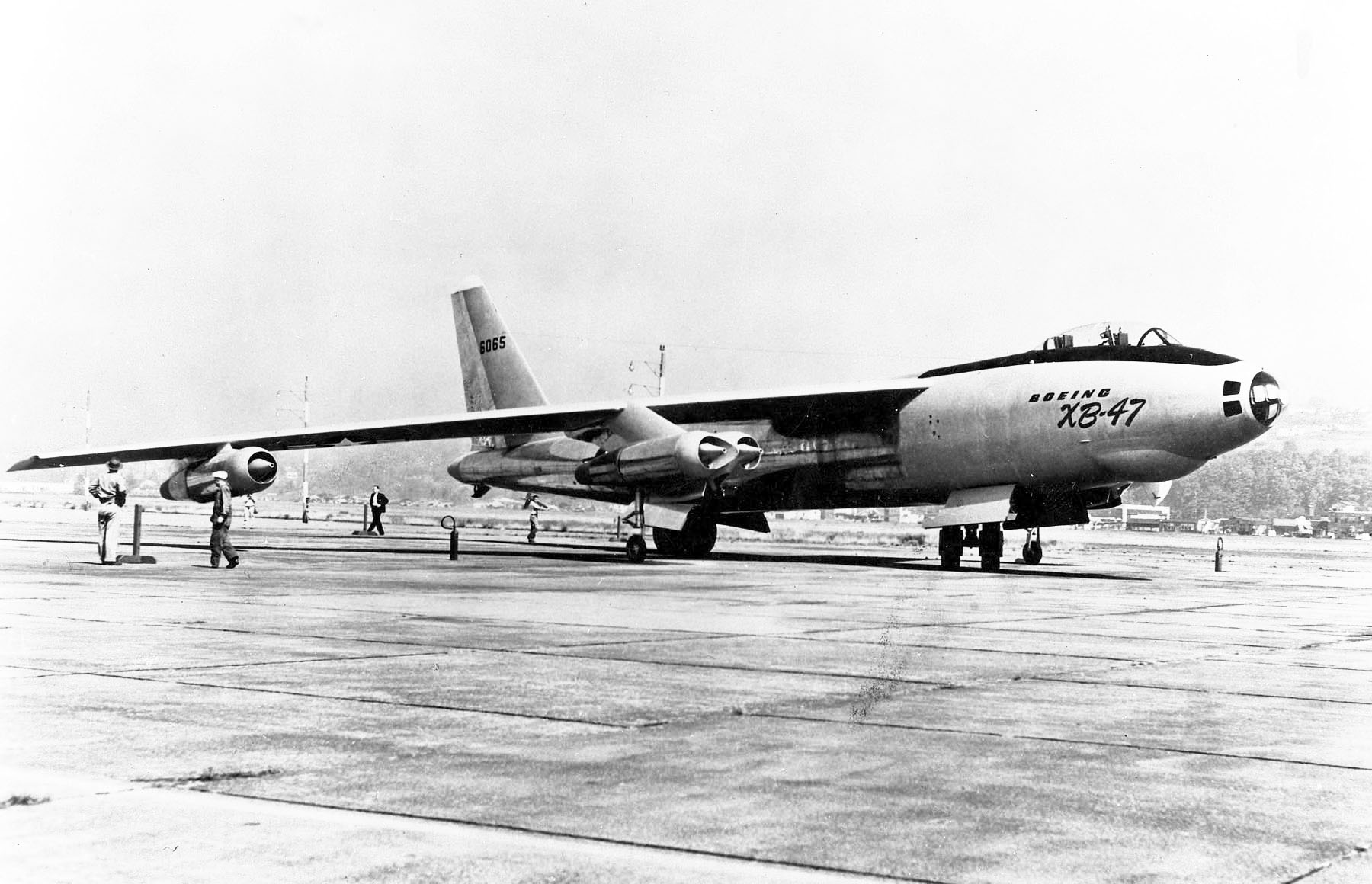|
340th Flying Training Group
The 340th Flying Training Group is a reserve component of the United States Air Force. It is assigned to the Twenty-Second Air Force of Air Force Reserve Command, at Randolph Air Force Base, Joint Base San Antonio, Texas. The group is the headquarters for reserve flying training squadrons that are associate squadrons of Air Education and Training Command flying training squadrons. The group's first predecessor is the 340th Bombardment Group. After training in the United States, the group deployed to the Mediterranean Theater of Operations, where it flew North American B-25 Mitchell medium bombers, primarily on air support and air interdiction missions, earning two Distinguished Unit Citations for its actions. After V-E Day, the group returned to the United States, where it was inactivated in November 1945. The group was again active in the reserve from 1947 to 1949, but does not appear to have been fully manned or equipped with operational aircraft during this period. ... [...More Info...] [...Related Items...] OR: [Wikipedia] [Google] [Baidu] |
Air Force Reserve Command
The Air Force Reserve Command (AFRC) is a major command (MAJCOM) of the United States Air Force, with its headquarters at Robins Air Force Base, Georgia. It is the federal Air Reserve Component (ARC) of the U.S. Air Force, consisting of commissioned officers and enlisted airmen. AFRC also plays an integral role in the day-to-day Air Force mission and is not strictly a force held in reserve for possible war or contingency operations. AFRC also supports the United States Space Force through the 310th Space Wing, pending the creation of a space reserve component. Overview The federal reserve component of the United States Air Force, AFRC has approximately 450 aircraft assigned for which it has sole control, as well as access to several hundred additional active duty USAF aircraft via AFRC "Associate" wings that are collocated with active duty Air Force wings, sharing access to those same active duty Air Force aircraft. The inventory, both AFRC-controlled and active duty Regu ... [...More Info...] [...Related Items...] OR: [Wikipedia] [Google] [Baidu] |
Air Interdiction
Air interdiction (AI), also known as deep air support (DAS), is the use of preventive tactical bombing and strafing by combat aircraft against enemy targets that are not an immediate threat, to delay, disrupt or hinder later enemy engagement of friendly forces. It is a core capability of virtually all military air forces, and has been conducted in conflicts since World War I. A distinction is often made between tactical and strategic air interdiction, depending on the objectives of the operation. Typical objectives in tactical interdiction are meant to affect events rapidly and locally, for example through direct destruction of forces or supplies en route to the active battle area. By contrast, strategic objectives are often broader and more long-term, with fewer direct attacks on enemy fighting capabilities, instead focusing on infrastructure, logistics and other supportive assets. The term deep air support relates to close air support and denotes the difference between their r ... [...More Info...] [...Related Items...] OR: [Wikipedia] [Google] [Baidu] |
Air Mobility Command
Air Mobility Command (AMC) is a major command (MAJCOM) of the U.S. Air Force. It is headquartered at Scott Air Force Base, Illinois, east of St. Louis, Missouri. Air Mobility Command was established on 1 June 1992, and was formed from elements of the inactivated Military Airlift Command (MAC) and Strategic Air Command (SAC). AMC melded MAC's worldwide airlift system of primarily C-5 Galaxy, C-141 Starlifter (later replaced by C-17 Globemaster III beginning in 1995), and C-130 Hercules airlift aircraft with SAC's tanker force of KC-135 Stratotanker and KC-10 Extender aerial refueling aircraft, the latter air refueling aircraft having been freed from their strategic nuclear strike commitment to SAC's B-52 Stratofortress and B-1 Lancer bomber fleet by the end of the Cold War and the dissolution of the Soviet Union. Overview Air Mobility Command's mission is to provide global air mobility. The command also plays a crucial role in providing humanitarian support at home an ... [...More Info...] [...Related Items...] OR: [Wikipedia] [Google] [Baidu] |
Air Refueling
Aerial refueling, also referred to as air refueling, in-flight refueling (IFR), air-to-air refueling (AAR), and tanking, is the process of transferring aviation fuel from one aircraft (the tanker) to another (the receiver) while both aircraft are in flight. The two main refueling systems are '' probe-and-drogue'', which is simpler to adapt to existing aircraft, and the '' flying boom'', which offers faster fuel transfer, but requires a dedicated boom operator station. The procedure allows the receiving aircraft to remain airborne longer, extending its range or loiter time. A series of air refuelings can give range limited only by crew fatigue/physical needs and engineering factors such as engine oil consumption. As the receiver aircraft can be topped up with extra fuel in the air, air refueling can allow a takeoff with a greater payload which could be weapons, cargo, or personnel: the maximum takeoff weight is maintained by carrying less fuel and topping up once airborne. A ... [...More Info...] [...Related Items...] OR: [Wikipedia] [Google] [Baidu] |
Wing (military Aviation Unit)
In military aviation, a wing is a unit of command. In most military aviation services, a wing is a relatively large formation of planes. In Commonwealth countries a wing usually comprises three squadrons, with several wings forming a group (around 10 squadrons). Each squadron will contain around 20 planes. Commonwealth usage Origins On its establishment in 1912, the British Royal Flying Corps (RFC) was intended to be an inter-service, combined force of the British Army and Royal Navy. Given the rivalry that existed between the army and navy, new terminology was used, in order to avoid marking the corps out as having an army or navy ethos. While the term "wing" had been used in the cavalry, its more general use predominated. Accordingly, the word "wing", with its allusion of flight, was chosen as the term of subdivision and the corps was split into a "Military Wing" (i.e. an army wing) and a "Naval Wing". Each wing consisted of a number of squadrons (the term "squadr ... [...More Info...] [...Related Items...] OR: [Wikipedia] [Google] [Baidu] |
Boeing B-52 Stratofortress
The Boeing B-52 Stratofortress is an American long-range, subsonic aircraft, subsonic, jet-powered strategic bomber. The B-52 was designed and built by Boeing, which has continued to provide support and upgrades. It has been operated by the United States Air Force (USAF) since the 1950s. The bomber is capable of carrying up to 70,000 pounds (32,000 kg) of weapons,"Fact Sheet: B-52 Superfortress." ''Minot Air Force Base'', United States Air Force, October 2005. Retrieved: 12 January 2009. and has a typical Range (aeronautics), combat range of around 8,800 miles (14,080 km) without aerial refueling. Beginning with the successful contract bid in June 1946, the B-52 design evolved from a straight wing aircraft powered by six turboprop engines to the fi ... [...More Info...] [...Related Items...] OR: [Wikipedia] [Google] [Baidu] |
Bergstrom Air Force Base
Bergstrom Air Force Base (1942–1993) was located seven miles southeast of Austin, Texas. In its later years it was a major base for the U.S. Air Force's RF-4C reconnaissance fighter fleet. History Bergstrom was originally activated on 19 September 1942, as Del Valle Army Air Base. The United States Army leased from the city of Austin, on land acquired from the Santiago Del Valle Grant. The Chisholm Trail ran through the tract. The name of the base was changed to Bergstrom Army Air Field on 3 March 1943, in honor of Austinite Capt. John August Earl Bergstrom, who was killed at Clark Field, Philippines during one of the early Japanese bombings at the start of the war. Bergstrom was a member of the 19th Bombardment Group. The base was renamed Bergstrom Field on 11 November 1943 at the suggestion of then Congressman Lyndon B. Johnson. It became Bergstrom Air Force Base in December 1948, coinciding with the creation of the Air Force as a separate service. Initially, ... [...More Info...] [...Related Items...] OR: [Wikipedia] [Google] [Baidu] |
Strategic Air Command
Strategic Air Command (SAC) was both a United States Department of Defense Specified Command and a United States Air Force (USAF) Major Command responsible for command and control of the strategic bomber and intercontinental ballistic missile components of the United States military's strategic nuclear forces from 1946 to 1992. SAC was also responsible for the operation of strategic reconnaissance aircraft and airborne command post aircraft as well as most of the USAF's aerial refueling fleet, including aircraft from the Air Force Reserve (AFRES) and Air National Guard (ANG). SAC primarily consisted of the Second Air Force (2AF), Eighth Air Force (8AF) and the Fifteenth Air Force (15AF), while SAC headquarters (HQ SAC) included Directorates for Operations & Plans, Intelligence, Command & Control, Maintenance, Training, Communications, and Personnel. At a lower echelon, SAC headquarters divisions included Aircraft Engineering, Missile Concept, and Strategic Communicati ... [...More Info...] [...Related Items...] OR: [Wikipedia] [Google] [Baidu] |
Boeing B-47 Stratojet
The Boeing B-47 Stratojet (Boeing company designation Model 450) is a retired American long- range, six-engined, turbojet-powered strategic bomber designed to fly at high subsonic speed and at high altitude to avoid enemy interceptor aircraft. The primary mission of the B-47 was as a nuclear bomber capable of striking targets within the Soviet Union. Development of the B-47 can be traced back to a requirement expressed by the United States Army Air Forces (USAAF) in 1943 for a reconnaissance bomber that harnessed newly developed jet propulsion. Another key innovation adopted during the development process was the swept wing, drawing upon captured German research. With its engines carried in nacelles underneath the wing, the B-47 represented a major innovation in post-World War II combat jet design, and contributed to the development of modern jet airliners. Suitably impressed, in April 1946, the USAAF ordered two prototypes, designated "XB-47"; on 17 December 1947, the fi ... [...More Info...] [...Related Items...] OR: [Wikipedia] [Google] [Baidu] |
Whiteman Air Force Base
Whiteman Air Force Base is a United States Air Force base located just south of Knob Noster, Missouri, United States. The base is the current home of the B-2 Spirit bomber. It is named for 2nd Lt George Whiteman, who was killed during the attack on Pearl Harbor. History World War II In 1942, the U.S. Army Air Corps selected the site of the present-day base to be the home of Sedalia Glider Base, a training base for WACO glider pilots. In May 1942, construction workers began building a railroad spur for the new air base in an area known to locals as the "Blue Flats" because of the color of the soil. The new railroad line was built by the Missouri Pacific Railroad. The base was officially opened on 6 August 1942. On 12 November 1942, the name was changed to Sedalia Army Air Field. After the end of World War II, operations at the airfield declined, and many of the buildings were abandoned. In December 1947, the base was put on inactive status. 340th Bomb Wing In August 1951, the b ... [...More Info...] [...Related Items...] OR: [Wikipedia] [Google] [Baidu] |
Boeing KC-135 Stratotanker
The Boeing KC-135 Stratotanker is an American military aerial refueling aircraft that was developed from the Boeing 367-80 prototype, alongside the Boeing 707 airliner. It is the predominant variant of the C-135 Stratolifter family of transport aircraft. The KC-135 was the United States Air Force's first jet-powered refueling tanker and replaced the KC-97 Stratofreighter. The KC-135 was initially tasked with refueling strategic bombers, but it was used extensively in the Vietnam War and later conflicts such as Operation Desert Storm to extend the range and endurance of US tactical fighters and bombers. The KC-135 entered service with the United States Air Force (USAF) in 1957; it is one of nine military fixed-wing aircraft with over 60 years of continuous service with its original operator. The KC-135 is supplemented by the larger McDonnell Douglas KC-10 Extender. Studies have concluded that many of the aircraft could be flown until 2030, although maintenance costs have great ... [...More Info...] [...Related Items...] OR: [Wikipedia] [Google] [Baidu] |
General Dynamics FB-111
The General Dynamics F-111 Aardvark is a retired supersonic, medium-range, multirole combat aircraft. Production variants of the F-111 had roles that included ground attack (e.g. interdiction), strategic bombing (including nuclear weapons capabilities), reconnaissance and electronic warfare. Developed in the 1960s by General Dynamics, the F-111 entered service in 1967 with the United States Air Force (USAF). The Royal Australian Air Force (RAAF) also ordered the type and began operating the F-111C variant in 1973. The F-111 pioneered several technologies for production aircraft, including variable-sweep wings, afterburning turbofan engines, and automated terrain-following radar for low-level, high-speed flight. Its design influenced later variable-sweep wing aircraft, and some of its advanced features have since become commonplace. The F-111 suffered a variety of problems during initial development. A fighter variant, the F-111B, was not accepted for production. The F-111 ... [...More Info...] [...Related Items...] OR: [Wikipedia] [Google] [Baidu] |









